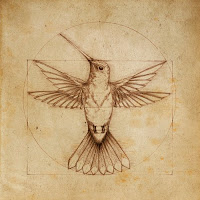The #1 Secret to Drawing
As I start
the school year, it is standard practice to get to know my students and I
always ask the class the same series of questions – ‘Who enjoys art? Who enjoys
drawing? Who enjoys drawing but doesn’t think they’re any good at it? And who
wants to get better at drawing?’ No matter what the responses are for the first
three questions, students always answer a resounding YES to the last. In fact, I’m
not sure I’ve met anyone who said they didn’t want to be able to draw better.
It might
surprise you that my #1 secret to drawing is not about drawing at all. It’s
about seeing. To make better drawings you need to know about proportion, perspective
and light and shadow. Everything we draw can be broken down into lines, shapes
and tones. Learn how to look at those things and you can learn how to draw
well.
Last year I
read “How to Think like Leonardo Da Vinci” by Michael J. Gelb. Da Vinci is among
the greatest geniuses in history. The book offers seven principles to live by
in order to think like the great Da Vinci and find your own genius. One of
these principles is “Sensazione”, meaning “The Sensations”, or senses, of
sight, sound, touch, taste and smell. Da Vinci embraced all of these to enrich
his experience of life, but it was sight that he valued most. Saper vedere (knowing
how to see) was one of his mottoes and the foundation of his artistic and
scientific practice. His ability to see was extraordinary, as is documented in
his “Codex on the Flight of Birds”. Da Vinci recorded in impeccable detail the
movement of birds’ wings and feathers during flight. It wasn’t until the
technology of slow-motion pictures became available was it confirmed that Da
Vinci’s drawings were indeed accurate.
 |
| Leonardo DaVinci's study of birds in flight |
Da Vinci spent
a lot of his time sketching and observing everything around him. I encourage anyone
who wants to improve their drawings skills to do the same, myself included.
Learn to look closely and draw what you see. Many people draw what they think
they see, not what they actually see. For example, many young students draw
eyes up the top of the face, when in fact eyes are positioned in the middle.
This is because they have not learned to record what they see.
"One must always
draw, draw with the eyes, when one cannot draw with a pencil." Balthus
Many people,
especially my students, like to work from reference images, but I recommend drawing
from life. That way you have the full 360 degree experience. Our eyes see things
differently to a camera, our focus and perspective are different somehow and I
think being with the actual object helps build a better visual memory of the
item. You can shift it around and draw it over again from a different angle.
 |
| My blind drawing of DaVinci |
My favourite
drawing activity to teach students how to see is blind drawing. Sounds kinda
counterintuitive, right? But blind drawing is simply drawing without looking at
the paper. Instead, the attention is sharply
focused on the object. The object is broken down into lines and shapes – the length
of the line, the angle of the line. The curvature of the shape. The highest
point and the lowest point. Just keep eyeballing the object and try to draw what
you see on the page. Blind drawing is a lot of fun, especially the big reveal
at the end. The results are often hilarious, as the drawing hand has wandered
from the original starting point and the individual parts don’t meet up. But,
just as often, there are parts of the drawing that are accurate. In the end it doesn’t
matter what the drawing looks like, the activity is about the process of
learning how to see. If you haven’t
tried it before, give it a go!
Happy
drawing!
Until next
time,
Erin



Comments
Post a Comment